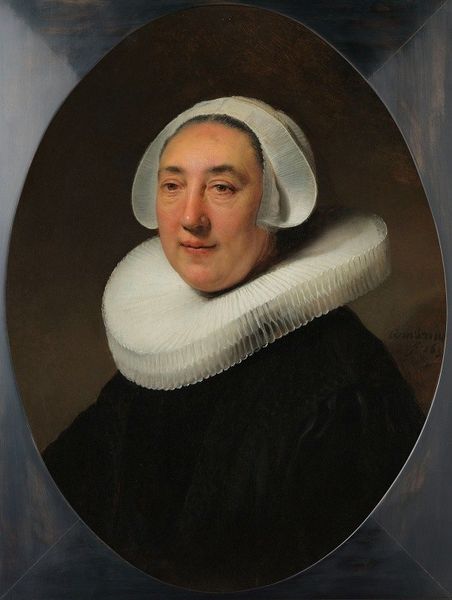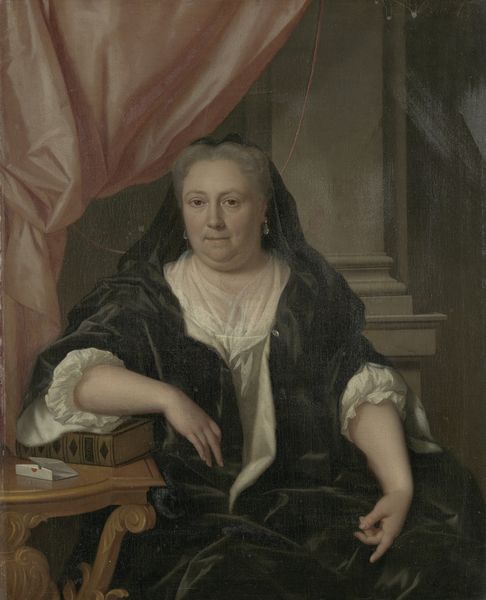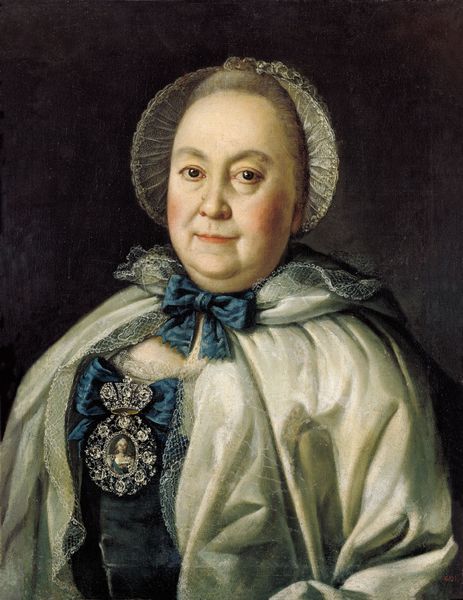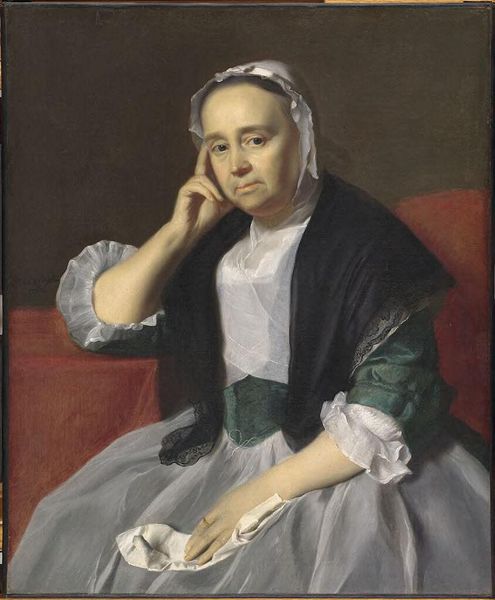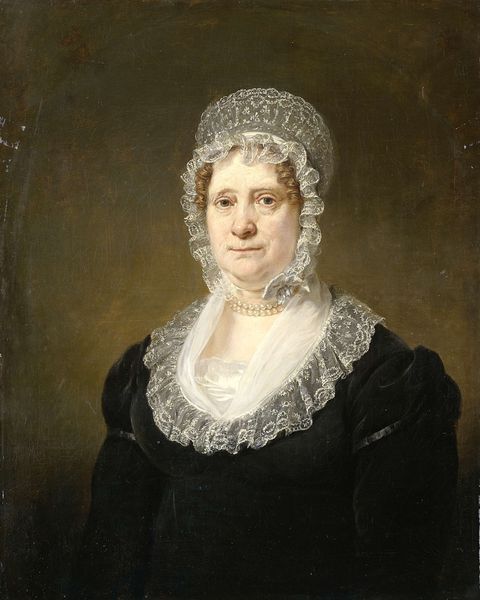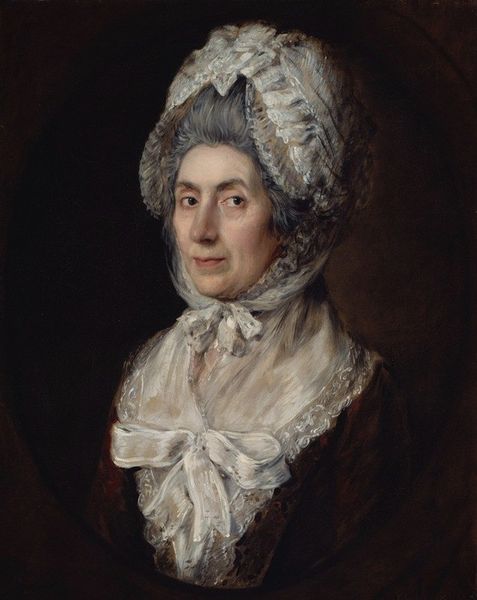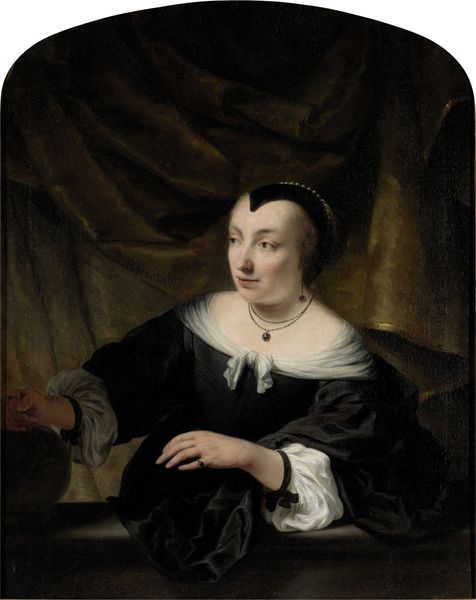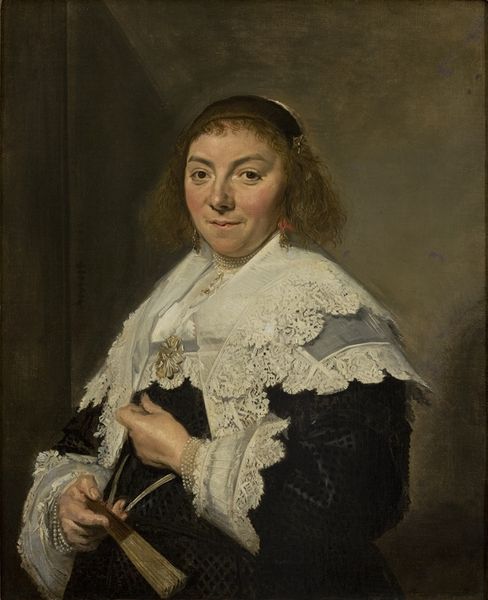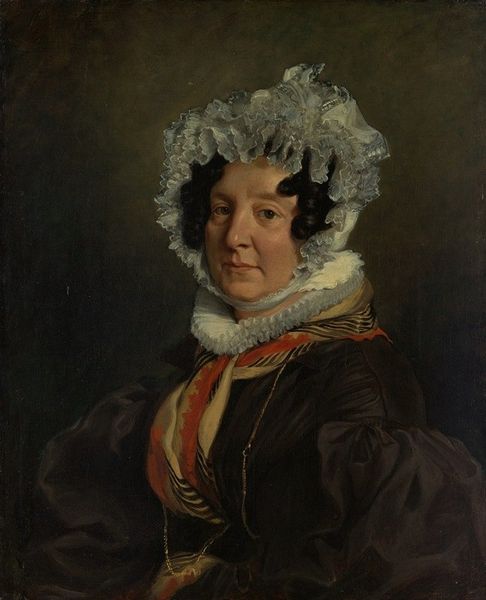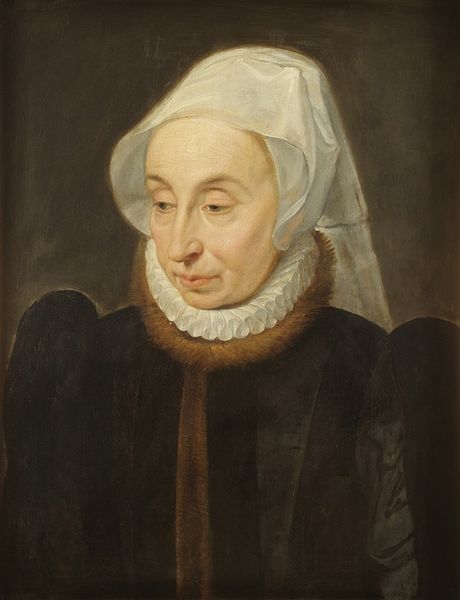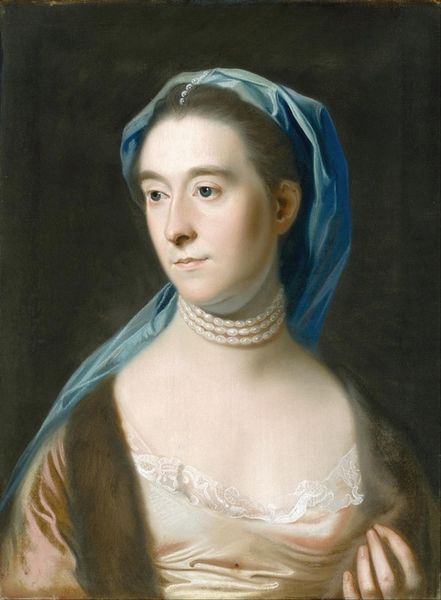
Copyright: Public Domain: Artvee
Curator: What a study in contrasts. Look at the way Jozef Israëls has portrayed Sientje Nijkerk-Servaas, captured in 1857 when she was ninety years young. There’s a quiet dignity radiating from her face, isn’t there? Editor: It's undeniably imposing. That stiff black dress and intricate lace collar feel heavy, almost like armour. It evokes a sense of rigid social structure, all those layers and textures hinting at the weight of expectations placed upon women, perhaps? Curator: Precisely, that tension is delicious. The portrait evokes a particular mood for me: the softness in her eyes seems to challenge the rigid appearance. I sense a long life, wisdom, maybe even a hint of mischief beneath the surface. The portrait asks, I think, about the hidden self beneath public presentation. Editor: Let’s delve into that presentation for a moment. Israëls’ application of oil paint builds a fascinating tactile reality. The detail of the lace—look how it's rendered. The production of this collar must have demanded countless hours of manual labor. Isn’t it striking how fashion of this era required so much craft, embedding real lives within each garment? Curator: Oh, utterly! It speaks volumes of a world governed by patience and precision. The pink ribbons on her bonnet--are they intentionally fragile in opposition to the somber darkness beneath? Pink isn’t exactly a color one associates with nonagenarians, so its presence feels deeply personal. Editor: Exactly! And this painting itself became another commodity, reliant on the market for pigments, brushes, canvases, plus the labor of the artist himself. We mustn’t forget the economics inherent to creating a work such as this; portraits were commissions and signals of social standing. The consumption of art, in its way, mimicking the very patterns we find embedded in Sientje's attire. Curator: Mmm, a portrait of a life and a reflection of its time, crafted so exquisitely on a simple piece of linen. One begins to wonder about the narratives that are yet to be spun about the labor and the luxury we ourselves indulge in daily, isn't it. Editor: Absolutely. Israëls gifts us not merely with an image, but an intersection—craft, wealth, and the quiet resilience reflected in the sitter's aged, knowing eyes.
Comments
No comments
Be the first to comment and join the conversation on the ultimate creative platform.

